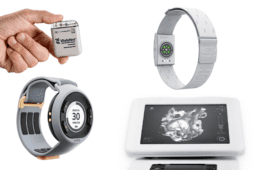
Researchers from the University of Pittsburgh’s Swanson School of Engineering and McGowan Institute for Regenerative Medicine (MIRM) are proposing that if 3D printers, or additive manufacturing, can produce custom replacement parts for machines, why couldn’t the same process create biodegradable tissue repair structures for the human body?
“Additive Manufacturing of Biomedical Devices from Bioresorbable Metallic Alloys for Medical Applications” was one of 15 projects selected by America Makes, the National Additive Manufacturing Innovation Institute, as part of its second call for additive manufacturing (AM) applied research and development projects. Principal investigator is Prashant Kumta, PhD, the Swanson School’s Edward R. Weidlein Chair Professor and professor of bioengineering, chemical and petroleum engineering, mechanical engineering and materials science, and professor of oral biology in the School of Dental Medicine; and co-PI is Howard Kuhn, PhD, adjunct professor of industrial engineering. Patrick Cantini, director of Scientific Collaborations for the University of Pittsburgh Medical Center (UPMC) and director of the McGowan Institute’s Center for Industry Relations, will serve as project manager.
Corporate partners include ExOne (North Huntingdon, Pa.), Magnesium Elektron (Madison, Ill.), and Hoeganaes Corp. (Cinnaminson, NJ). The $590,000 contract is for an 18-month period. The research group’s America Makes proposal was based upon the article, “Novel processing of iron–manganese alloy-based biomaterials by inkjet 3D printing” in the journal Acta Biomaterialia (9 (2013) 8593–8603).
“Additive manufacturing combines the best of technologies – the ability to construct complex structures via computer imaging utilizing a combination of advanced biocompatible and more importantly, biodegradable alloys,” Dr. Kumta said. “Thanks to computer-aided tomography, or CAT scans, we can directly image a damaged structure like a bone or trachea and construct a biodegradable iron-manganese based scaffold to promote natural tissue growth during the healing process. This reduces the risk of disease transmission via methods such as bone grafting, and allows for a more precise framework for the body to heal itself by controlling the degradability of the alloy by careful alloy design and engineering.”
In addition to precise modeling of a body structure, additive manufacturing allows for the use of biodegradable alloys that serve as functional scaffolds for inducing cells to grow as well as platforms for delivering biological molecules and antibiotics, rather than as artificial implants.
“Although we could create a ceramic or plastic part with additive manufacturing, this is not as ideal as an iron-manganese alloy which is stronger, more ductile and degrades over time to be replaced by new bone,” Dr. Kuhn added.
A process called “sintering” cures the scaffolds to provide structural integrity to the bonded particles. During this phase of the research, the scaffolds will be evaluated for biocompatibility, bioresorption and mechanical properties. Some of the biomedical devices such as bone fixation plates and screws, as well as tracheal stents will be produced in preparation for later clinical studies.
“Additive manufacturing is a game-changer for biomedical research because it not only provides a framework structure for cells and tissue to grow providing thus a better foundation for the body to repair its own tissues, but also because it can be utilized in remote areas such as army field hospitals, where access to traditional treatments may be limited,” Dr. Kumta said. “Rather than implanting an inert screw or plate or joint, we can utilize a degradable metallic alloy which provides the template allowing the body’s own regenerative machinery to provide an effective pathway to heal itself.”




